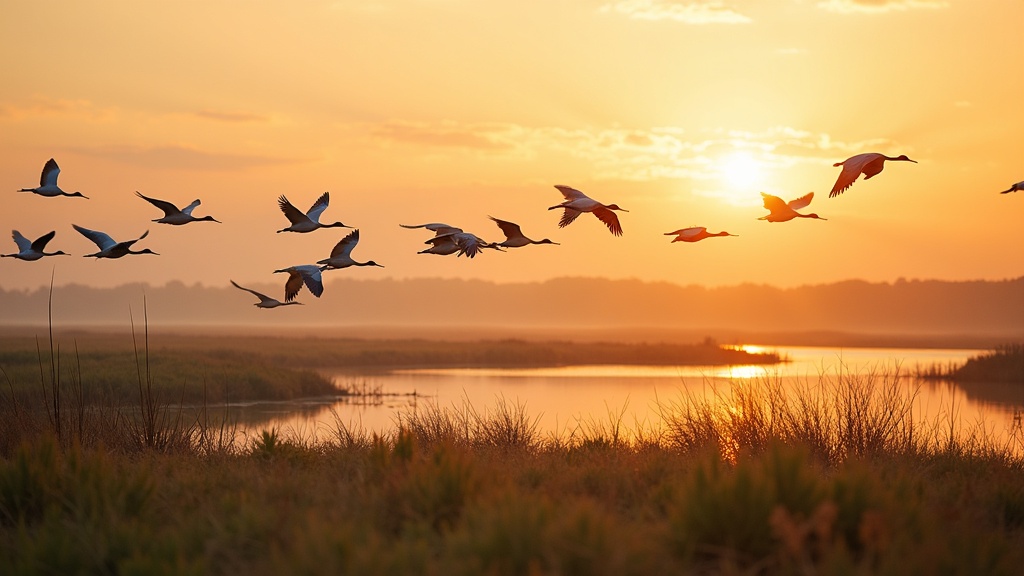Migratory Bird Education
The Joys and Wonders of Identifying Migratory Birds
Migratory birds have always fascinated me. These feathery globetrotters cover thousands of miles across continents, connecting ecosystems and human cultures as they go. If you’re curious about learning more, or want to inspire others, teaching and learning about migratory birds can be a great way to get into science, geography, conservation, and the sense of wonder that draws people to nature in the first place. Here’s a guide to help you begin your exploration of migratory bird education, whether you’re an enthusiast, a teacher, an individual that loves nature, or a parent hoping to spark curiosity in kids.

Why Explore Migratory Bird Education?
Migratory bird education is not just about spotting birds through binoculars. It helps build an understanding of how animals travel huge distances, why these journeys matter, and what people can do to support birds along the way. Schools, museums, and community groups use migratory birds as a gateway to cover topics like climate change, habitat loss, and our role in the natural world.
Scientists estimate that over 4,000 bird species migrate, sometimes flying from tundra to tropics and back again. Jumping into their routes and challenges offers lessons in geography, weather, biology, and teamwork. Their epic flights are also a unique way to connect people and cultures globally, since countless communities celebrate the birds’ arrivals and departures.
Getting Started: Where to Learn About Migratory Birds
I’ve found that a good starting place makes a big difference for migratory bird education. Here’s what usually works best:
- Local Nature Centers and Wildlife Refuges: Most areas have parks, refuges, or even city green spaces where you can spot migratory birds during spring and fall. Staff at these locations often know the prime times and best spots for migration events.
- Online Tools and Citizen Science: Websites like eBird and the Audubon Society provide migration maps, lists, and reporting tools to help you keep up with what species to expect in your region and when.
- Field Guides and Apps: Books and apps like Merlin Bird ID are fantastic for new and experienced learners. They offer sound clips, range maps, and quick ID tips matched to the birds you see.
The key is to start with simple resources and build up your knowledge little by little. Even casual walks in the park during migration season can introduce you to a new species every year.
Migratory Bird Basics Everyone Should Know
Getting a grip on some basics goes a long way. Check out these key ideas:
- Why Birds Migrate: Birds usually migrate to reach better food and nesting spots. Seasonal changes trigger their journeys and show them where to go.
- Flight Paths: Birds follow traditional routes called flyways, like bird highways in the sky. These flyways often travel along coastlines, rivers, or mountains, with regular stops at key habitats.
- Types of Migrants: Some birds travel short distances; others cross entire continents or even oceans. Swallows, warblers, geese, and shorebirds are classic long distance migrants.
Kids and grownups both love learning bird calls and migration facts. For example, the Arctic Tern travels from the Arctic to Antarctica and back each year—around 25,000 miles one way! This fact alone is amazing!
Cool Tools and Resources for Migratory Bird Education
I’m always eager to track down new ways to make learning about migratory birds more interactive and fun. Here are some favorites:

- Binoculars: A decent pair of binoculars makes it way easier to spot and identify birds. Lightweight, wide-view models are helpful for kids.
- Field Journals: Keeping a bird log, sketchbook, or photo series lets learners track what they see, when, and where. This hands-on method helps you spot migration patterns over time.
- Hands on Kits: Migratory bird kits (many available from nature centers) often include feather samples, maps, or simple experiments showing how migration works.
- Migration Games and Activities: Activities like “flyway races” or paper bird construction connect science with movement and creativity.
- Interactive Migration Maps: Online maps from Bird Cast or Journey North show real-time migrations using radar and crowdsourced data, making migration patterns come alive visually.
Don’t forget: even one bird feeder near your window can bring surprising visitors during migration peaks.
Tips for Teaching Migratory Birds to Kids and Beginners
Making education meaningful and memorable is about excitement and discovery. Here’s what works when introducing migratory birds to others:
- Start with Common Local Species: Focusing on birds you already see gives learners a sense of connection. Watch robins, swallows, or flocks of geese, and talk about where they head in fall and spring.
- Use Visuals and Sounds: Download bird calls and share photos or migration videos. Most kids are surprised that tiny songbirds can fly thousands of miles every year.
- Incorporate Art and Stories: Encourage drawing, painting, or writing stories about “a day in the life” of a migratory bird, mixing creativity with science for deeper understanding.
- Citizen Science Projects: Join the Great Backyard Bird Count or Project FeederWatch. Reporting sightings helps science and gives learners a sense of real-world participation.
- Seasonal Bird Walks: Schedule outings during migration peaks in fall or spring. Even brief “scavenger hunt” walks with a checklist can turn up all sorts of discoveries.
Mixing education with real exploration helps make bird migration feel tangible, not just abstract facts.
Common Challenges in Migratory Bird Education (And How to Handle Them)
No subject is perfectly straightforward, including migratory birds. Here are a few tricky spots and how to roll with them:
- Confusing Identification: Many migratory birds change color with the seasons or look similar to local birds. Take it slow—field guides and patience are your friends, and spotting differences gets easier over time.
- Unpredictable Timing: Weather shifts and climate change can switch up migration timing or routes, making big bird gatherings hard to predict. Following local birding groups online helps keep information current.
- Location Access: Not everyone has wetlands, grasslands, or forests nearby. In these cases, focus on backyard feeder watching, virtual programs, or special field trips.
- Weather Disruptions: Rain or strong wind can make birds hard to find, since they’re more likely to stay hidden. Clear, calm mornings after storms are usually your best bet for seeing action.
The more you get involved, the more these challenges will start to feel manageable. Join online forums or local events for motivation and support.
Advanced Ideas for Expanding Migratory Bird Education
When you’re ready to dig into more, migratory bird education has lots of ways to take it up a notch:
Check Out Global Connections: Migratory birds connect continents. Swallows, for instance, might head off to Africa for the winter and return to Europe for summer. Studying international conservation efforts, like World Migratory Bird Day, gives added perspective to local bird watching.
Get Into Conservation: Losing habitat is a real threat for migratory birds. Get involved in habitat restoration projects or speak up for bird conscious gardening and window decals to make a difference.
Watch Technology at Work: Scientists use tiny satellite tags and GPS trackers to follow migration routes. Many organizations put out live updates online, so you can watch migrations unfolding in real time.
Host Migration Events: Organize bird walks, school fairs, or art contests celebrating bird migration. These events unite communities and help raise awareness in fun and memorable ways.
Frequently Asked Questions
People often ask these questions when starting out:
How do birds know where to go during migration?
Birds use cues from the sun, stars, earth’s magnetic fields, and landmarks. Some species remember routes learned over many years.
Can you attract migratory birds to your yard?
Certainly! Offering fresh water, native plants, and keeping predators away makes a big difference. Clean feeders with fresh seed or sugar water appeal to hungry or tired travelers.
What are the main threats to migratory birds?
Habitat loss, glass collisions, and climate change are top threats. Simple actions, like turning off lights at night during migration (if you live in a city) and adding bird-safe window decals, help reduce risks.
Wrapping Up
Learning and teaching about migratory birds unlocks a huge world of discovery, connection, and action. Each migration season brings new chances to see, hear, and appreciate these beautiful and graceful travelers. Whether you’re keeping a bird journal in the park, joining online trackers, or swapping tips with friends or family, every effort helps keep these epic adventures going strong for future generations.
Grab your binoculars, bring some curiosity, and see where the birds will take you this season!
Wow, this is fascinating! I’ve always been curious about birds and honestly in awe with the migratory travels.
I wasn’t really sure where I should look for this type of information, so I really appreciate your recommendation of Merlin Bird ID in the Field Guides and Apps section of your article. Thank you so much for the information, you have certainly peaked my interest.
Megan, Thank you for your response. True the Merlin bird App is very educational. I personally used it last fall to Identify birds in a local state park. It recorded their sound frequency and also gave the common name and the genus and species name. The Merlin App told me I herd a Red Bellied Woodpecker, aka Melanerpes carolinus. So much fun! Rhonda